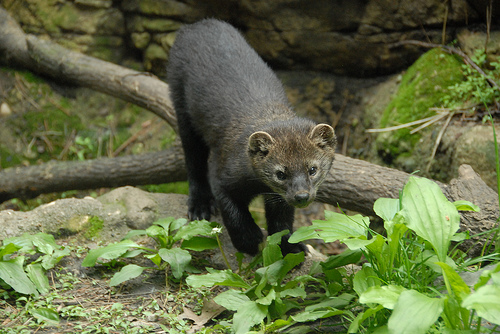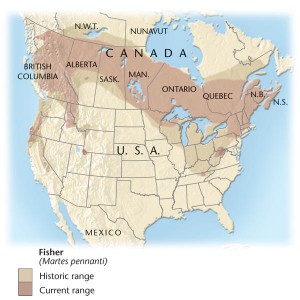Wild New Jersey Revisited: A Predator Returns to the State’s Rugged Northwest
by David Wheeler

Wild New Jersey Revisited is a monthly series of excerpts from Conserve Wildlife Foundation executive director David Wheeler’s 2011 book Wild New Jersey: Nature Adventures in the Garden State. Today we focus on the surprising return of a rare predator to New Jersey, and the late field biologist who foretold it – then documented it.
Excerpt from Chapter 2:
The Carnivore Corridor of Stokes State Forest
On a frosty winter morning, I join a fellow adventurer for a sunrise hike into Tillman Ravine. This cold is the kind that takes your breath away, the kind that makes it hard to notice anything else – until I descend into the ravine. The rushing mountain stream twists and turns, crashing over jagged boulders and toppled hemlocks. Patches of ice coat the surfaces of riverside boulders, some icicles growing upward from the waterfall mist. Heavy recent snows and rains have the stream flowing higher than normal, overrunning some of the trail. This is one wild place.
It is easy, on this early morning, with no sound but the crashing torrent, to imagine the wildlife that lives here. A mother bear warily leading her cubs down the steep mountain slope for a drink. A mink slinking stealthily along the boulders in search of its next meal. A river otter family tumbling in the currents downstream.
One visionary wildlife researcher is doing a lot more than imagining that. Charlie Kontos is seeing it all. Through his motion-detector cameras and wilderness tracking, through his exhaustive historical research and coordination with wildlife geneticists, he is leading the charge to ensure that the species we nearly lost are still welcome here in the wilds of northwestern New Jersey. For Kontos, that safe haven cannot be some isolated pocket of land. We must restore the active wildlife corridor that connects to the Catskills and the Appalachians and the Adirondacks, all the way up into New England and the great boreal forest of Canada.
Continue reading “Wild New Jersey Revisited: A Predator Returns to the State’s Rugged Northwest”
